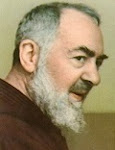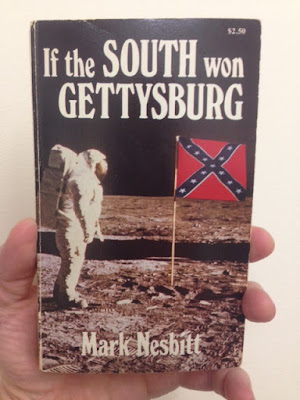Pickett’s Charge: A microhistory of the final attack
at Gettysburg, July 3, 1863
© 1959 by George R. Stewart (1895-1980)
First off, I like that term: microhistory. I’ve read
history off and on for over twenty years now, and I don’t think I’ve ever read
a “microhistory.” It appeals to me. Think of it: to know so much about a
certain, limited period of time – an event suspended in the amber of time – to
be an expert. That is what the author of this book, George Stewart, was. An
expert. An authority.
The book chronicles “Pickett’s Charge,” the final
assault on the union line on Day Three of the battle at Gettysburg. Robert E. Lee,
aggressively invading the North for a second time in nine months, is seeking to
destroy the Army of the Potomac, newly led by George Meade for all of three
days. A victory for the South could very well lead to independence via foreign
recognition or, not an unreasonable possibility, the utter destruction of
Northern forces in the northeast. Harrisburg, Philadelphia – even Washington –
would lay open undefended and at the rebels’ mercy.
On days one and two of the surprise confrontation, Lee
attacked either flank of the Northern army. Picture two ridges, each running
north-south, with about a mile between them, and a diagonal road running
southwest to northeast within this plain. That’s the Gettysburg battlefield. The
Union, holed up on the eastern ridge, is anchored at the north by Culp’s Hill,
and in the south by Round Top and Little Round Top. Prior rebel attacks on both
positions failed. Normally unpredictable, Lee now decides to attack the middle.
10,500 men in three divisions formed in several lines will
march across the mile-long open plain for a timeless 20 minutes, braving
artillery and rifle fire, to assault the Northern position. Though it was not
distinctly Pickett’s to command (he was one of three commanders), history has
labeled it “Pickett’s Charge.” It is the “high-water mark” of the South, for ultimately
it failed, and the Rebellion was forced to fight a long, drawn-out, losing
battle over the next 21 months.
Stewart divides the book into several large chapters:
Early Morning – Mostly Confederate
Later Morning – Mostly Union
Noon-day Lull
Between the Signal-shots
Cannonade
Second Lull
Advance
High-Water Mark
Repulse
Afterwards
Each takes a segment of the day and details, in short
digestible bites, who was where with what: Generals, colonels, regiments,
artillery batteries, defenses, headquarters. Then we enter the minds of the
men, the leaders and the grunts behind the two-foot-high stone walls, those
selected to “charge” into fire with fixed bayonets, the war councils, the
dispatches between Longstreet (who had misgivings about the attack) and his
various underlings. Meade’s correct guess where Lee’d attack. There’s lots of
humor (a hog steals bread earmarked for the general’s lunch), lots of
interesting tidbits and factoids (there was a Private George Stewart, no
relation to the author, in the heat of the action). I found it page-turning,
immensely intriguing, and the “microhistory” truly brings the battle to life in
ways that larger works, for me, failed to do.
This book will stay on the shelf for a re-reading in
the future. I may check out Stewart’s other diverse works as well. For
instance, he wrote a post-apocalyptic novel in 1949 (before post-apocalyptic
everything was done to death) that won the first International Fantasy Award.
The novel, Earth Abides, was said by
Stephen King to be an inspiration for The
Stand.
Much as my previous Civil War read, If the South Won at Gettysburg, had something
of substance to learn in its appendix, so does Pickett’s Charge. In the first, it was Civil War battlefield
tactics, which I summarized in my review of that work. In Stewart’s
microhistory, in the last chapter he details the grim “butcher’s bill,” which
answers the question that had commonly popped into my mind, how do historians
and the military quantify battlefield casualties?
Well, Stewart informs us of the following:
* Wounded should equal about four times the dead
* Killed / Total Casualties is approximately 17
percent (for the Civil War)
* In close fighting, the killed-to-total-casualty
ratio is closer to 20 percent
* About 1 wounded man in 7 died later of his wounds
* Rule of thumb: 1 casualty in 12 credited to
artillery fire
and not quite a statistical item, but one I found
interesting due to other stuff I’ve read regarding the Civil War – at
Gettysburg, there was not a single recorded instance of a man killed or wounded
by a bayonet.
Grade: A-plus.
N.B. Numbered among the Confederate dead on the
evening of July 3, 1863, was Private George Stewart of the 1st Tennessee.








